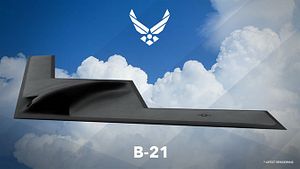The U.S. Air Force’s B-21 “Raider” long-range strategic bomber will take to the sky for the first time in December 2021, the U.S. Air Force (USAF) Vice Chief of Staff, General Stephen Wilson, said on July 24 at an AFA Mitchell Institute event in Washington, D.C.
During his remarks, the general recounted a visit to facilities of the U.S. defense contractor Northrop Grumman in Florida to assess the progress of the B-21 bomber program. The company is “moving out on that pretty fast,” he was quoted as saying by Air Force Magazine. He also noted that he has an application on his phone “counting down the days (…) and don’t hold me to it, but it’s something like 863 days to first flight.”
That would imply that the B-21 will make its maiden flight sometime in December 2021.
He did not offer many additional details about the program. The CEO of Northrop Grumman and her team “are focused on software integration and making sure … we’ll have the software ready for the plane when it’s delivered,” he added.
The company was awarded a contract in October 2015 that covered the Engineering and Manufacturing Development (EMD) phase as well as the first five production lots to cover the production of the first 21 stealth bombers.
Notably, Wilson emphasized that the USAF needs at least 100 “B-21s.” For now, the service plans to procure around 100 B-21s, at a cost of $656 million each in 2019 dollars.
The B-21 will likely be a subsonic long-range bomber featuring a flying wing design and purportedly carry both conventional and nuclear weapons, and be optionally manned. Specific details around the bomber’s technical specifications and capabilities remain classified.
The stealth aircraft is supposed to be more easy to upgrade than previous bombers to reduce life-cycle costs.
The stealth bomber will probably be able to carry the Massive Ordnance Penetrator bomb, as well as the B-61-12 thermonuclear gravity bomb. In addition, there is speculation that it will be armed with the Long Range Stand Off (LRSO) nuclear-capable cruise missile.
The B-21 will slowly replace the USAF’s B-1B Lancer, B-2 Spirit, and B-52H fleets. The service is “focused on the development of the new bomber as well as modernizing the B-52,” Wilson said, “(…) and we’re exploring the force structure between the B-1 the B-2 and the B-52.”
In total, the USAF presently operates a fleet of 157 bombers, a 46 percent decrease from 1991 when the service had 290 bombers.
“The general consensus is, we don’t have enough long-range strike capacity (…) We continue to look at what that force will be for the future across the bomber force, what mix it will be,” Wilson added.
































